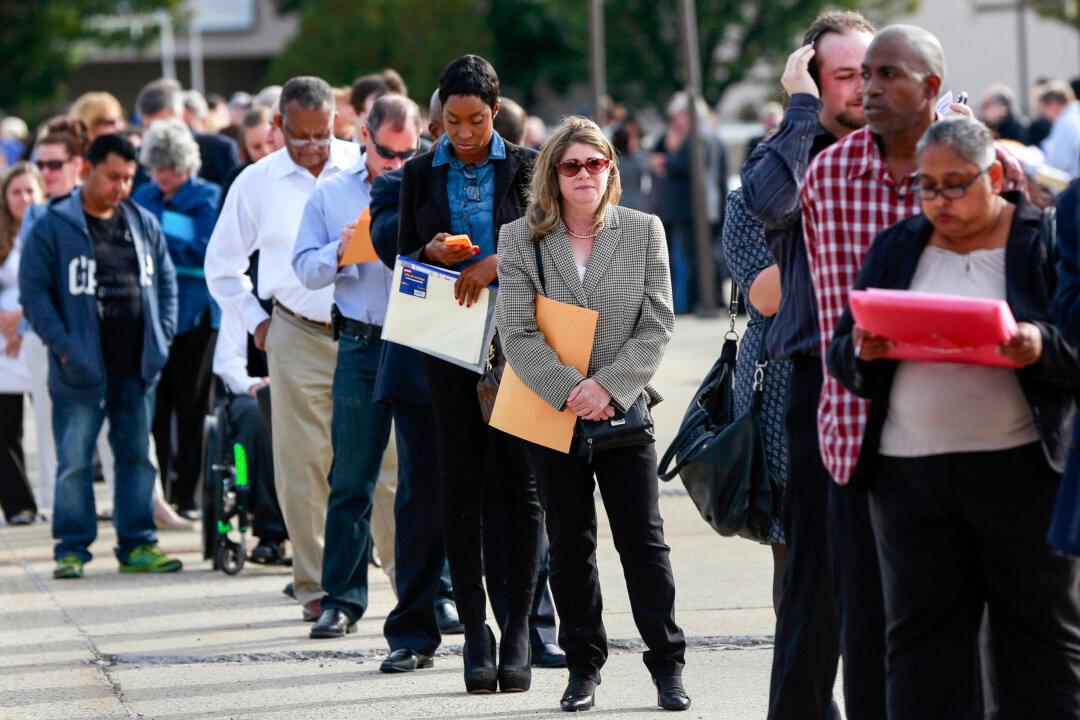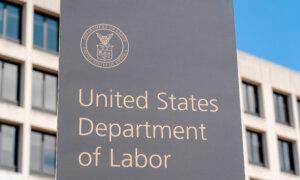
The U.S. economy created fewer jobs than expected while the unemployment rate increased, signaling that the labor market could be going through a rapid deceleration at a time when the Federal Reserve could soon be cutting interest rates.
The unemployment rate rose to 4.3 percent, up from 4.1 percent, and higher than economists’ expectations of 4.1 percent. This represents the highest jobless rate since October 2021.
Average hourly earnings eased to a smaller-than-expected pace of 3.6 percent year-over-year. On a monthly basis, average hourly earnings edged up 0.2 percent.
The labor force participation rate inched higher to 62.7 percent, from 62.6 percent. Average weekly hours slipped to 34.2, from 34.3.
Health care accounted for much of the jobs, with 55,000 new positions added last month. This was followed by construction (25,000) and government (17,000).
The information sector shed 20,000 jobs while manufacturing payrolls were little changed.
The May and June job numbers were revised down by 2,000 and 27,000, respectively.
Additionally, the household portion of the monthly jobs report, which removes duplication, showed the economy created 67,000 new jobs.
The number of people working two or more jobs surged to 8.473 million, up from 8.34 million. Full-time workers advanced by 448,000, while part-time workers declined by 325,000.
Market Reaction
The U.S. financial markets extended their losses in pre-market trading following the employment data, with the leading benchmark indexes down as much as 2 percent.U.S. Treasury yields were red across the board, with the benchmark 10-year yield plummeting below 3.82 percent. The 2-year yield fell below 4 percent, while the 30-year bond tumbled to 4.16 percent.
The U.S. Dollar Index (DXY), a gauge of the greenback against a basket of currencies, tanked below 104.00.
Markets now received confirmation that the job market is “rolling over” after a miss in payroll growth and the jump in the unemployment rate, said Byron Anderson, the head of fixed income at Laffer Tengler Investments.
“The Fed narrative of data-dependent should be done moving forward, especially if the labor data continues to fall before the next Fed meeting,” Anderson said in a email to media outlets. “The Fed will need to go into economic protection mode moving forward to calm markets. We should see rate cuts shortly and the bond market is asymmetrically positioned lower for the short term.”
While investors are penciling in a rate cut at the September policy meeting, traders are discussing the size of the Federal Reserve’s initial pivot.
A Week of Labor Data
Heading into the much-anticipated July jobs report, there was a flurry of labor-related numbers.Job quits slumped to 3.282 million, the lowest level since November 2020.
Additionally, annual pay gains for job-stayers slowed to a three-year low of 4.8 percent, while pay gains for job changers eased to 7.2 percent.
“With wage growth abating, the labor market is playing along with the Federal Reserve’s effort to slow inflation. If inflation goes back up, it won’t be because of labor,” said Nela Richardson, the chief economist at ADP, in a statement.
Indeed, BLS data show that wage gains are slowing. In the second quarter, the employment cost index (ECI), a broad measure of employee compensation, rose at a smaller-than-expected pace of 0.9 percent, down from 1.2 percent in the first quarter.
Unit labor costs also climbed at a smaller-than-expected rate of 0.9 percent in the April-June period, falling short of the consensus forecast of 1.8 percent.
Tech and services led the way, with 6,009 and 2,932 layoffs, respectively.


No comments:
Post a Comment